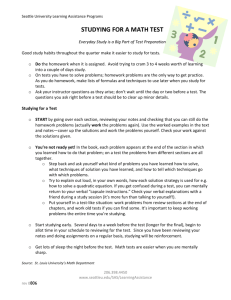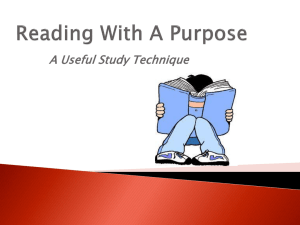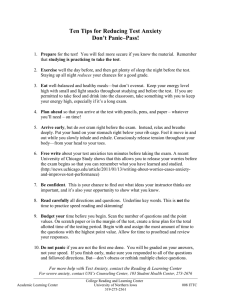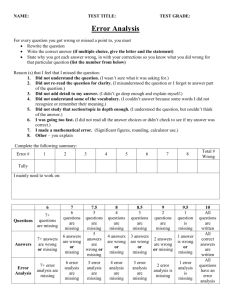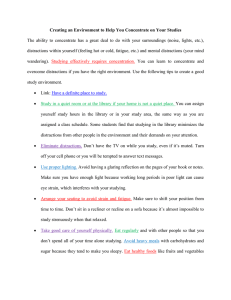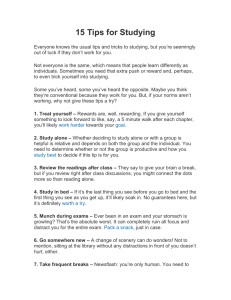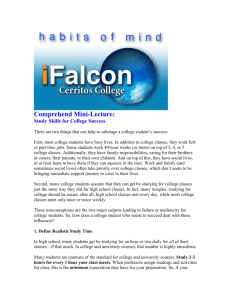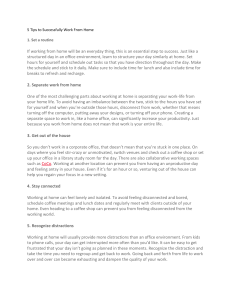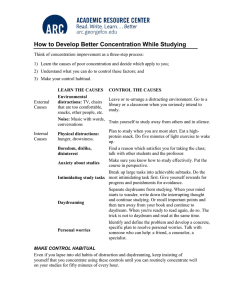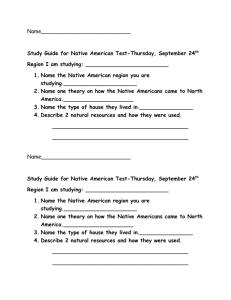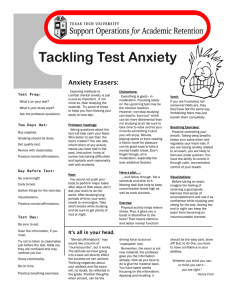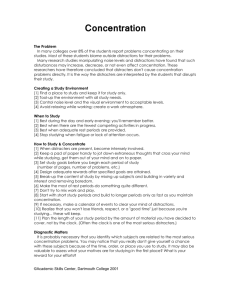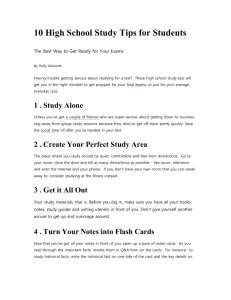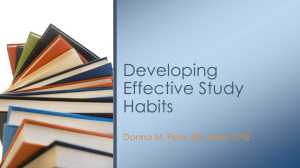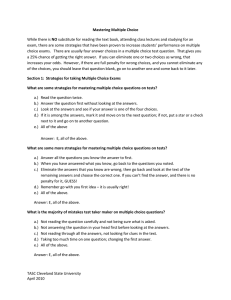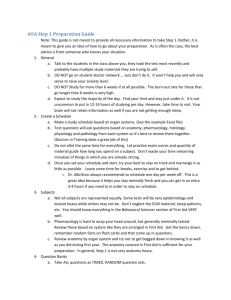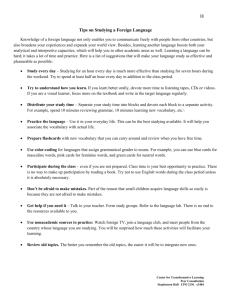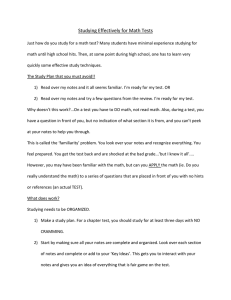Math Test-Taking Tips
advertisement
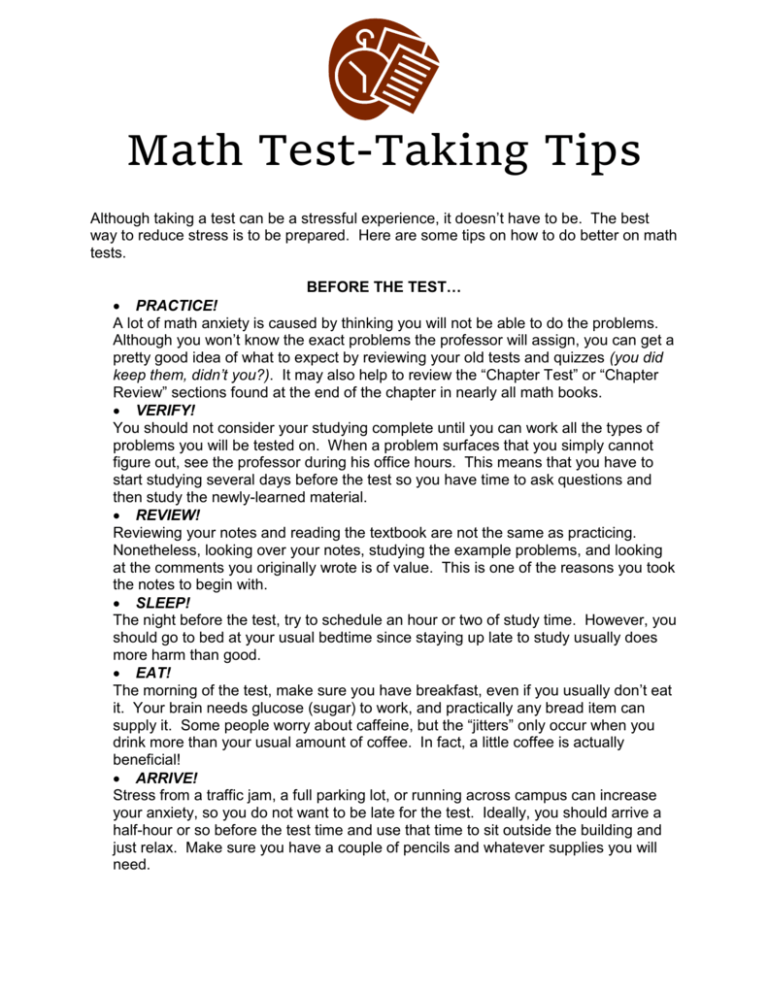
Math Test-Taking Tips Although taking a test can be a stressful experience, it doesn’t have to be. The best way to reduce stress is to be prepared. Here are some tips on how to do better on math tests. BEFORE THE TEST… PRACTICE! A lot of math anxiety is caused by thinking you will not be able to do the problems. Although you won’t know the exact problems the professor will assign, you can get a pretty good idea of what to expect by reviewing your old tests and quizzes (you did keep them, didn’t you?). It may also help to review the “Chapter Test” or “Chapter Review” sections found at the end of the chapter in nearly all math books. VERIFY! You should not consider your studying complete until you can work all the types of problems you will be tested on. When a problem surfaces that you simply cannot figure out, see the professor during his office hours. This means that you have to start studying several days before the test so you have time to ask questions and then study the newly-learned material. REVIEW! Reviewing your notes and reading the textbook are not the same as practicing. Nonetheless, looking over your notes, studying the example problems, and looking at the comments you originally wrote is of value. This is one of the reasons you took the notes to begin with. SLEEP! The night before the test, try to schedule an hour or two of study time. However, you should go to bed at your usual bedtime since staying up late to study usually does more harm than good. EAT! The morning of the test, make sure you have breakfast, even if you usually don’t eat it. Your brain needs glucose (sugar) to work, and practically any bread item can supply it. Some people worry about caffeine, but the “jitters” only occur when you drink more than your usual amount of coffee. In fact, a little coffee is actually beneficial! ARRIVE! Stress from a traffic jam, a full parking lot, or running across campus can increase your anxiety, so you do not want to be late for the test. Ideally, you should arrive a half-hour or so before the test time and use that time to sit outside the building and just relax. Make sure you have a couple of pencils and whatever supplies you will need. DURING THE TEST… AVOID DISTRACTIONS! Lots of things can cause distractions – having to leave to use the restroom, having to get up to sharpen a pencil, a bird hopping around outside, just about anything. Try to plan ahead so that you are not as likely to be distracted. READ THE INSTRUCTIONS! Read the instructions carefully – even if what you do seems obvious. Some instructors will insist on a certain format or will require that work be shown even on simple problems. Some problems may be stated in unusual ways. If you do not read the instructions for each and every problem, you are likely to lose some points somewhere. TAKE THE TEST FOUR TIMES! THE FIRST TIME through a test, you should skim it, doing only the problems that you find short and easy. This is to give you some idea of the length of the test and to get you off to a good start. If you can answer some questions quickly, you are less likely to be anxious. THE SECOND TIME through a test, do only the problems you know how to do. If you have any doubt about how to do them, skip them for now. Never take a test in order (i.e., 1, 2, 3,…). The hardest problems are not always at the end! THE THIRD TIME through a test, do the problems you don’t know how to do. This might sound strange, but math is a very logical subject, and if you think about a test question long enough, you can often figure out what the answer has to be. Even if you don’t get the problem finished, write down what you are doing – most instructors give partial credit. THE FOURTH TIME through a test should be when there are only 5-10 minutes remaining. Look over your remaining problems, looking for places where you think you can get a few more points in a hurry. DON’T LEAVE EARLY and DON’T GIVE UP! Math tests are no places for cowards! A NOTE REGARDING MULTIPLE CHOICE TESTS Multiple choice tests are not easier than other types. Although you can get a few extra points at the end by just bubbling “B” for all problems you do not know, the writers of the test generally make the most common wrong answers two or three of the choices. When doing a multiple choice test, do the problem without looking at the choices! Then, remember that just because your answer happens to be a choice is no proof that you are correct. WHEN THE TEST IS RETURNED… KEEP IT! Do not throw away a returned test. Start by making certain the professor added up your points correctly. Then, go over the problems you missed and try to understand what types of errors you made. These include: Careless Errors – when you know how to do the problem, but did not get it right. Conceptual Errors – when you think you know how to do the problem, but don’t. Study Errors – when you don’t know how to do the problem. (For more information, see the handout, “You got you math test back? What now?”) I do not know if you will succeed; I DO KNOW you can improve.

